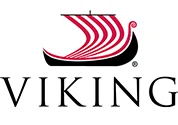 Alan Oshiki and Jake Yanulis co-authored this article. Alan Oshiki and Jake Yanulis co-authored this article. |
In today’s challenging financial environment, the opportunity to seek out new owners for a portion of a business is both attractive and more achievable than combining entire companies. A recent Deloitte survey found that almost half of M&A professionals are “likely to pursue a divestiture in the coming 12 months.”
According to Mergermarket’s database, 18.8 percent of the deals announced year to date have been divestitures—excluding PE exits—notably higher than the 10 percent run rate since late 2021.
While executives and bankers see significant opportunity for shareholder value creation in shedding or separating business lines, these announcements can create more uncertainty for employees, customers and other stakeholders than a traditional M&A transaction. Unlike a typical M&A deal, which tends to bring more clarity around ownership structure and timing to completion, divestitures can leave stakeholders wondering a) what comes next and b) who will own this company in 12–18 months.
Although divestitures may lack some of the cachet of traditional strategic combinations, they present the corporate parent with a particular set of communications challenges:
- With their smaller size, these transactions may fly under the radar of top-tier media outlets, and the divested asset may be less well-known or understood than its corporate parent.
- Often, a divestiture involves a less-desirable operation or subsidiary, one that no longer fits the company’s strategy or has not succeeded as originally planned, meaning the tone of media coverage may be negative.
- The need to raise cash through a sale to repay soon-to-mature corporate debt at the parent can also weigh down the seller’s narrative.
- In a sale, the seller, buyer and the divested asset may not share the same view of the business and therefore may position it quite differently.
- A divested business may have a much smaller and less-experienced communications team than the parent company.
- A frequent priority for the business being divested—and its buyer—is employee retention, but the seller may have different communications objectives for itself. Because the bulk of the communications function is typically housed at the parent level, this can create conflicting narratives and strain the communications capabilities of the business to be sold.
- A spin-off creates a newly public company, much like an IPO, but often without the sell-side’s sponsorship through research and market-making. This situation can be exceptionally challenging from an investor relations standpoint when trying to raise the company’s public market profile.
| This article is featured in O'Dwyer's August '23 Financial PR/IR and Professional Services PR Magazine (view PDF version) |
These challenges can be mitigated by setting clear objectives followed by careful communications planning and execution. While not an exhaustive list, here are some examples.
In a sale, be realistic about what a narrative can accomplish and focus on the potential of the remaining business(es). There can be acute pressure to spin a sale as a “positive” story, which sounds good in theory, but can result in an overly strained narrative that lacks credibility. In practice, a seller’s external messaging doesn’t have to be positive. It can be neutral, particularly given the relative dominance of the buyer’s narrative in a transaction. Instead, highlight how the proceeds from the sale best position the remaining business for growth.
Even if the seller’s external messaging is neutral, pay close attention to certain audiences. External message neutrality does not mean the seller should ignore the divested unit’s stakeholders. They’re often the most important audiences and include employees, customers, regulators, business partners and others who contribute to the success of the divested unit.
The buyer’s and seller’s messages should synchronize wherever possible, or at least avoid contradiction. This is especially relevant if there are sensitive issues related to the history behind the original investment, the performance and sale of the divested unit, or even antitrust concerns in the current regulatory environment. In these cases, coordination between buyer and seller on announcement messaging needs to happen early and requires more effort than it otherwise would, particularly at a senior management level.
Spin-off messaging requires a new and credible narrative for success in the equity markets. Key questions that must be answered include: Why is this asset likely to be more successful and appropriately valued as a publicly traded company? How can this newly public company’s strategy flourish, and who is leading it to success?
When a company is to be spun off, it needs to get ready to be public. In many ways, this is the same process a company would undergo on the path to an IPO. The team, the financial and communications infrastructure, and the policies and procedures all need to be in place when the spin-off happens. It’s difficult to regain investor confidence if a company enters the public equity markets unprepared.
Regardless of the divestiture method—and even if they’re a common feature of a company’s portfolio strategy—there are specific challenges that need to be addressed. In the current environment with divestitures on the rise, the pressure is on sellers/parent companies to meet these challenges and get the messaging right.
***
Alan Oshiki is Executive Vice President at H/Advisors Abernathy. Jake Yanulis is Senior Vice President at H/Advisors Abernathy.


 FGS Global represents private equity firm Thoma Bravo as it makes a $4.6B bid for Darktrace, a UK-based cybersecurity artificial intelligence firm.
FGS Global represents private equity firm Thoma Bravo as it makes a $4.6B bid for Darktrace, a UK-based cybersecurity artificial intelligence firm.
 Edelman handles Viking Holdings, the river and ocean luxury cruise line that plans to raise $1B via an IPO priced in the $21 to $25 per share range.
Edelman handles Viking Holdings, the river and ocean luxury cruise line that plans to raise $1B via an IPO priced in the $21 to $25 per share range. Teneo is handling the initial public offering of CVC Capital Partners, one of Europe’s largest private equity firms with nearly $200B in assets under management.
Teneo is handling the initial public offering of CVC Capital Partners, one of Europe’s largest private equity firms with nearly $200B in assets under management. Brunswick Group represents Endeavor Group Holdings as it agrees to go private via its acquisition by Silver Lake technology investment firm, which is handled by Edelman Smithfield.
Brunswick Group represents Endeavor Group Holdings as it agrees to go private via its acquisition by Silver Lake technology investment firm, which is handled by Edelman Smithfield.


 Have a comment? Send it to
Have a comment? Send it to 
No comments have been submitted for this story yet.